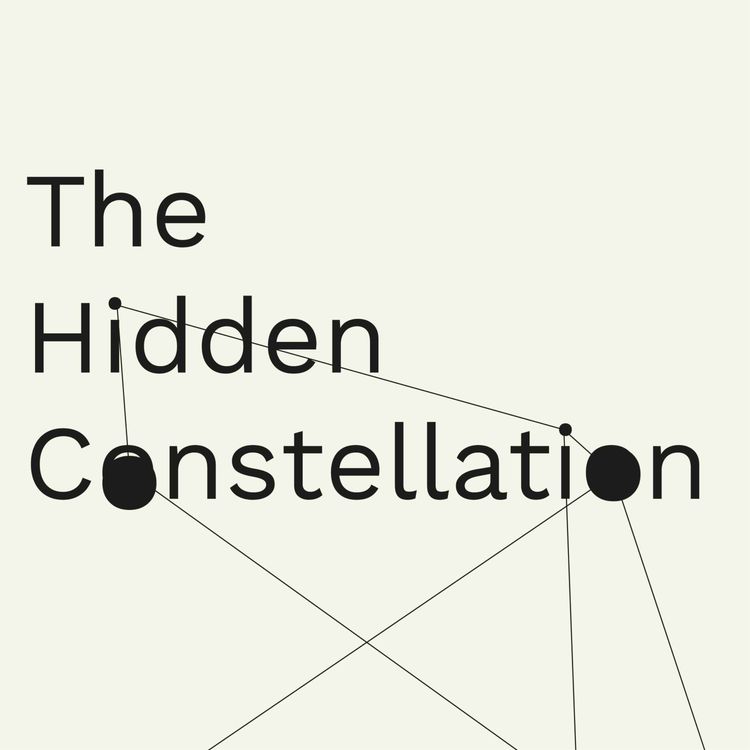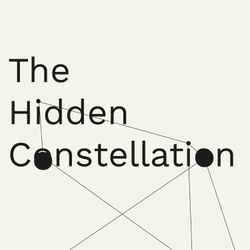Share

The Hidden Constellation
Episode 3 Part 2: HIDDEN
This episode delves even deeper into the idea of “hidden” digital labour, shifting our attention to the gnarly work of museum documentation and collections management. As with other practices of digital labour in the museum, there is a high degree of emotional labour and care involved in this work. We start to build a picture of how some digital activities are potentially reinforcing gender and other identity conventions which have been found in previous iterations of “hidden” museum work.
Voices you’ll hear in this episode include Anne Sharman – Collections Data Officer (National Railway Museum), Dr Tim Boon - Head of Research & Public History (Science Museum Group), Jack Kirby – Associate Director of Collections Services (Science Museum Group), Somaya Langley – Digital Preservation Manager (Science Museum Group), Dr Sophie Vohra - Research Associate (National Railway Museum) and Dr Phillip Roberts - former Associate Curator of Photography (National Science and Media Museum). The voiceover artist in this episode was Rifa Thorpe-Tracey.
More episodes
View all episodes


1. Episode 1: INTRODUCING 'The Hidden Constellation'
47:21||Season 1, Ep. 1In the first episode of The Hidden Constellation, hear a preview of what's to come in this series. Sophie provides a snapshot of the different kinds of digital labour – new, hidden, distributed, legacy and collective – to be reflected on within each of episode.Voices you’ll hear in this episode include Hope Miyoba – Wikimedian-in-Residence (Science Museum Group), Dr Laura Humphreys – Collections Information Project Manager (Science Museum Group), Dr Geoffrey Belknap – former Head Curator (National Science and Media Museum), Dr Arran Rees – Research Associate (University of Leeds), Toni Booth – Associate Curator of Film (National Science and Media Museum), Ruth Nightingale – Conservator (National Collections Centre), Jack Kirby – Associate Director of Collections Services (Science Museum Group), Dr Tim Boon – Head of Research & Public History (Science Museum Group), Chris Keady – Head of Learning (Science and Industry Museum), Mark Cutmore – Head of Commercial Experience (Science Museum Group) and Dave Patten – Head of New Media (Science Museum Group). Voiceover artists in this episode were Rifa Thorpe-Tracey and Ben Murray.
2. Episode 2: NEW
01:18:22||Season 1, Ep. 2New digital labour is disrupting, reorganising, and progressing the Science Museum Group’s core priority to promote science capital. Digital projects discussed in this episode include a meme collecting project at the National Science and Media Museum in Bradford and Heritage Connector, a research project that used data analysis approaches to build links at scale between catalogues, published material, and Wikidata. Museum staff will also describe the impact of once-in-a-lifetime digital initiatives like One Collection have provided an opportunity to instil new kinds of digital working across the Group, whilst increasing its ability to reach global audiences online. Voices you’ll hear in this episode include John Stack – Digital Director (Science Museum Group), Jessica Bradford – Keeper of Collections Engagement (Science Museum Group), Jack Kirby – Associate Director of Collections Services (Science Museum Group), Dr Laura Humphreys – Collections Information Project Manager (Science Museum Group), Dr Phillip Roberts - former Associate Curator of Photography (National Science and Media Museum), Dr Arran Rees – Research Associate (University of Leeds), Dave Patten, Head of New Media (Science Museum Group), and Dr Tim Boon – Head of Research & Public History (Science Museum Group). The voiceover artist in this episode was Chris Thorpe-Tracey. A link to Arran’s article on collecting memes can be found here.
3. Episode 3 Part 1: HIDDEN
42:06||Season 1, Ep. 3From cataloguing to archiving, conservation to collections management, “hidden” labour has long existed in cultural and heritage work. However, due to our reliance on digital technology, the nature of this “hidden” museum labour has irrevocably changed. Across the following two episodes, we’ll chart the uniquely “hidden” aspects of digital activity at Science Museum Group, considering how those working in archives, collections cataloguing, data management and documentation are the unsung heroes of the museum. In this episode, we travel to the National Railway Museum in York, turning our gaze to the complex, “hidden” digital labour required to work with an archive of such enormous scale and size, hearing from staff and volunteers about the kinds of skills – some more emotionally attuned and intuitive than you might expect – needed to digitise a vast technology collection. Voices you’ll hear in this episode include Dr Sophie Vohra – Research Associate (National Railway Museum), Alison Kay – Archives Manager (National Railway Museum), Olivia Weekes – former Associate Archivist for Film and Sound (National Railway Museum), Ian Ford – Volunteer (Caledonian Railway Association), Keith Fenwick – Volunteer (Caledonian Railway Association), Tania Parker – Associate Archivist (National Railway Museum), John Stack – Digital Director (Science Museum Group), Jessica Bradford – Keeper of Collections Engagement (Science Museum Group) and Jack Kirby – Associate Director of Collections Services (Science Museum Group). The voiceover artist in this episode was Rifa Thorpe-Tracey.
4. Episode 4 Part 1: DISTRIBUTED
45:35||Season 1, Ep. 4For decades, digital activity has been inconsistent across the cultural and heritage sectors. The following two episodes explore the distinctive and context-specific nature of digital work at Science Museum Group, focusing on why digital labour can be variable depending not only on which museum you visit, but on which museum department you find yourself in. This episode introduces some of the different and distributed forms of digital labour to be found in museums. Hear from staff involved with curatorial, marketing, and digital analysis to learn how new, more digitally focused job roles are breaking down departmental silos and prompting new ways of learning for the entire organisation. We’ll explore how these roles – often emerging from more administrative, infrastructural parts of the museum – are cultivating a new spirit of digital autodidacticism, a kind lifelong self-learning with technology across the Group. Voices you’ll hear in this episode include Dr Steven Leech – Curator of Exhibitions (Science and Industry Museum), Lopa Patel MBE – Trustee (Science Museum Group), Sally McDonald – Director (Science and Industry Museum), John Stack – Digital Director (Science Museum Group), Mark Cutmore – Head of Commercial Experience (Science Museum Group), Wassim Arkadan – Digital Analyst (Scient Museum Group), Cathy Pilkington – Marketing Manager (National Science and Media Museum) and Toni Booth – Associate Curator of Film (National Science and Media Museum).
4. Episode 4 Part 2: DISTRIBUTED
52:46||Season 1, Ep. 4In this, the second of two episodes focused on the distinctive nature of different forms of digital labour across Science Museum Group, we look to the experimental digital labour of the Group’s Northern museums. Hear how anarchic (but relatively low budget) digital experiments have reached new or previously disenfranchised communities, cultivating modes of learning which respond directly to audience need. We travel first to the Science and Industry Museum in Manchester where we hear how, through unique digital partnerships, the museum evolved its STEM learning offer to respond to the needs of its communities during and since the pandemic. Next, we journey to Locomotion in Shildon, County Durham, one of the Group’s two railway museums, and hear staff discussing the profound impact of small-scale digital initiatives for broadening access to the museum. As with the last episode, we hear from a museum trustee on why digital courage can be hard to embed in long-standing organisations of the scale and size of Science Museum Group. Voices you’ll hear in this episode include Chris Keady – Head of Learning (Science and Industry Museum), John Stack – Digital Director (Science Museum Group), Sally McDonald – Director (Science and Industry Museum), Dr Sarah Price – Head of Locomotion, Dr Sophie Vohra – Research Associate (National Railway Museum), Simon Walsh – former Volunteers and Community Engagement Officer (Locomotion), Eileen Atkins – Engagement and Programming Manager (Locomotion) and Lopa Patel MBE – Trustee (Science Museum Group). The voiceover artist in this episode was Dr Steven Orchard.
5. Episode 5: LEGACY
01:04:28||Season 1, Ep. 5Traces of past digital labour are to be found everywhere at Science Museum Group. In the penultimate episode of The Hidden Constellation, hear some of the organisation’s longest-standing employees describe the impact of new computing technology when it was initially introduced in the Group’s museums. Learn how, in the 1980s and 90s through to the 2000s, new digital technology profoundly altered established museum practices (as well as audience behaviour) – from curation to cinema projection, collections management to museum interactive design. While some of this legacy is time-consuming and problematic, much of it paved the way for the sophisticated digital labour practices we now find across Science Museum Group. Voices you’ll hear in this episode include Toni Booth – Associate Curator of Film (National Science and Media Museum), Anne Sharman – Collections Data Officer (National Railway Museum), Mark Cutmore – Head of Commercial Experience (Science Museum Group), Dr Tim Boon - Head of Research & Public History (Science Museum Group), Matt Raymond – Projection Manager (Science Museum), Dave Patten – Head of New Media (Science Museum Group), Somaya Langley – Digital Preservation Manager (Science Museum Group) and Olivia Weekes – former Associate Archivist for Film and Sound (National Railway Museum). Tim’s chapter on the history of the Science Museum between 1980 – 2000 can be found here.
6. Episode 6: COLLECTIVE
01:02:26||Season 1, Ep. 6Digital labour doesn’t involve just one person sitting in front of a screen, but rather a collaborative effort undertaken by people acting as a group – with multiple individuals, machines, and processes all working in tandem. In the final episode of this series, hear how collective digital labour at Science Museum Group has drawn a through-line between digital activities and new, more participatory ways of doing STEM heritage and of enabling science capital. This episode focuses entirely on the powerful and progressive digital activity of volunteers at Science Museum Group, profiling the valuable work of volunteers at the National Railway Museum and Locomotion and through organisation’s partnership with Wikipedia. Hear how, through collective, collaborative digital activity, digital equity in museums starts with volunteers. Voices you’ll hear in this episode include John Stack – Digital Director (Science Museum Group), Brian Gardner – Volunteer (National Railway Museum), Matt Hick – Head of Volunteering (Science Museum Group), Jessica Bradford – Keeper of Collections Engagement (Science Museum Group), Hope Miyoba – Wikipedian-in-Residence (Science Museum Group), Dr Sarah Price – Head of Locomotion, Dr Sophie Vohra – Research Associate (National Railway Museum), Simon Walsh – former Volunteers and Community Engagement Officer (Locomotion) and Eileen Atkins – Engagement and Programming Manager (Locomotion). The voiceover artist in this episode was Chris Thorpe-Tracey.Ross's article on the 'post-digital museum' is available here.